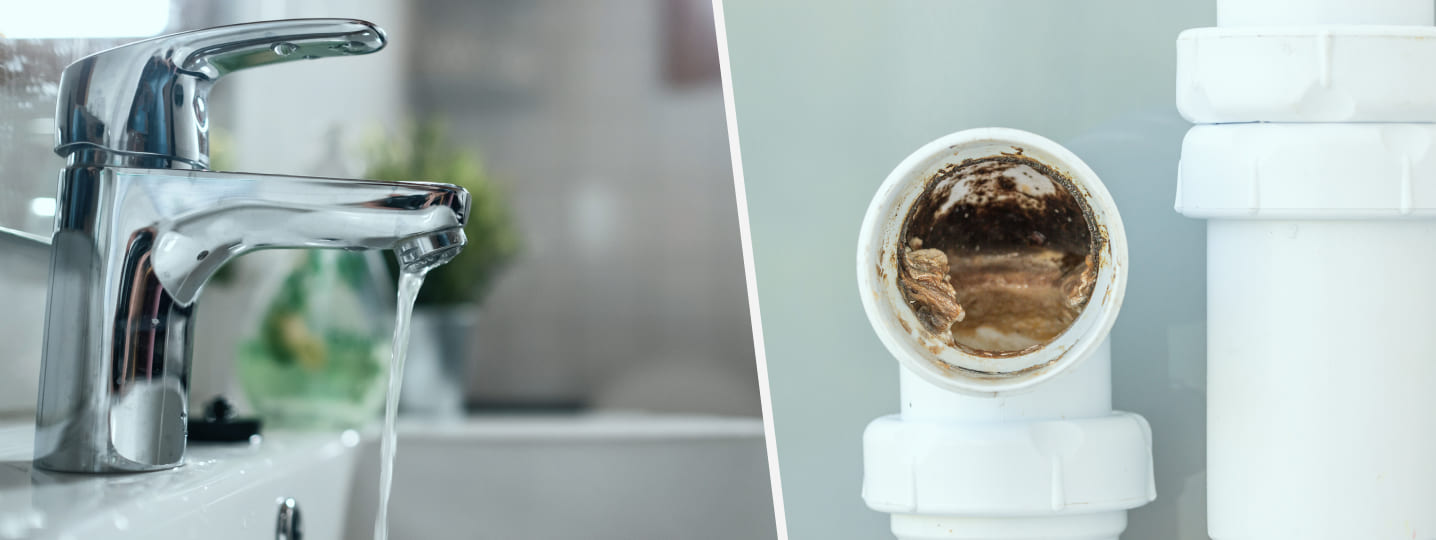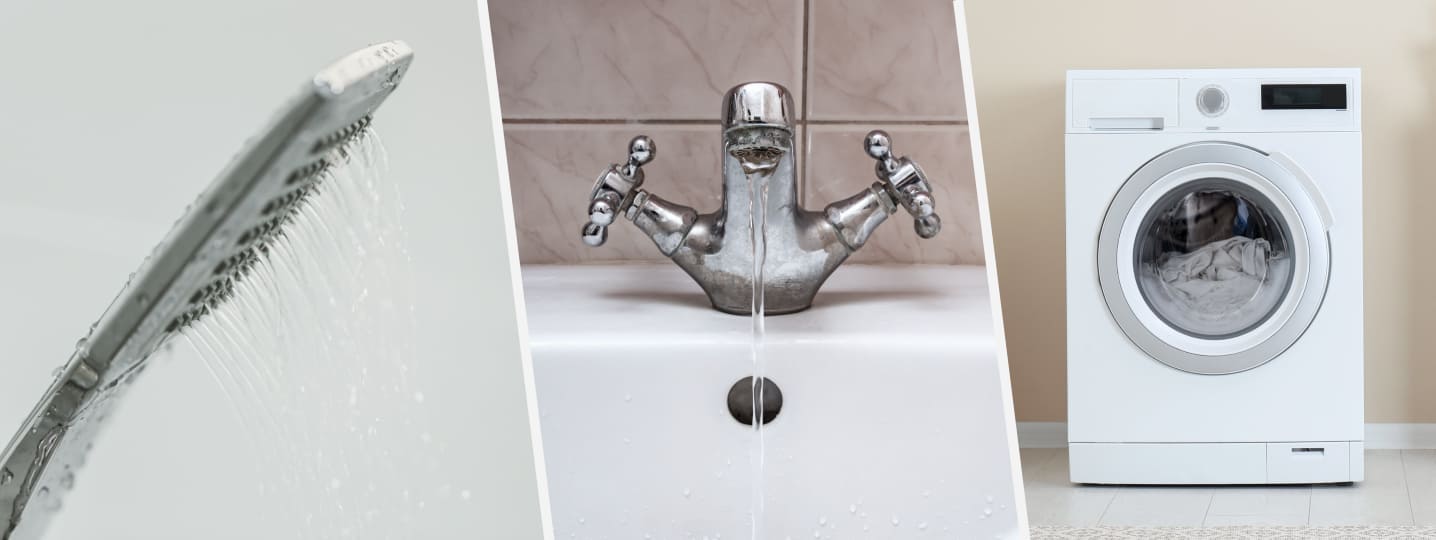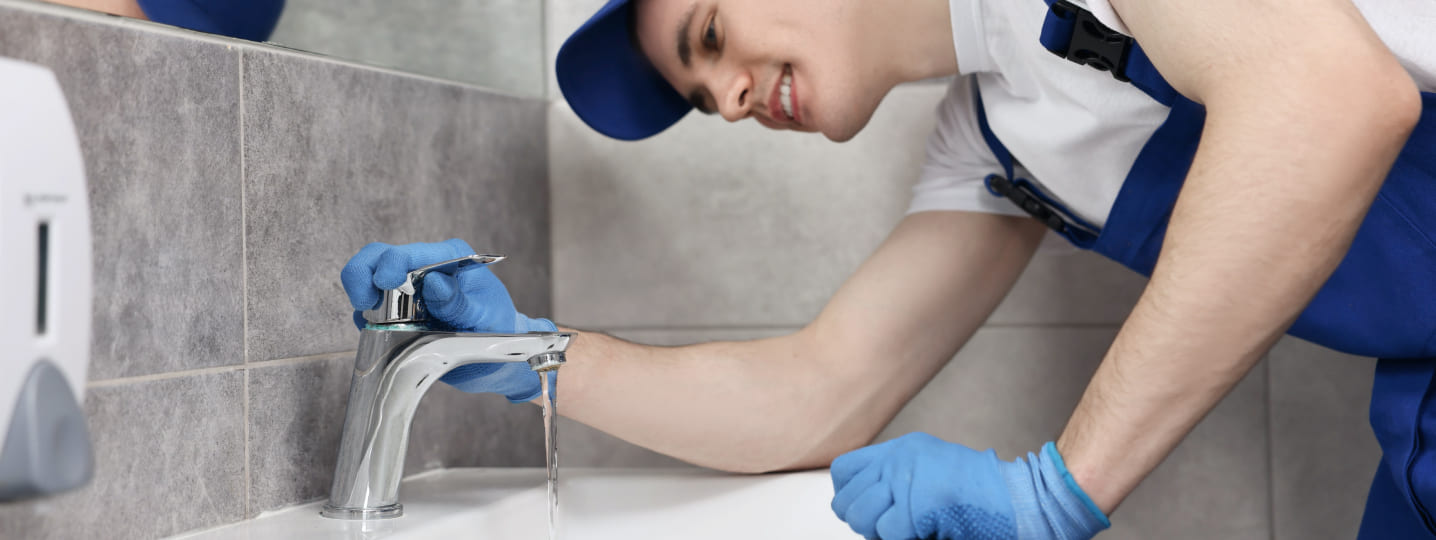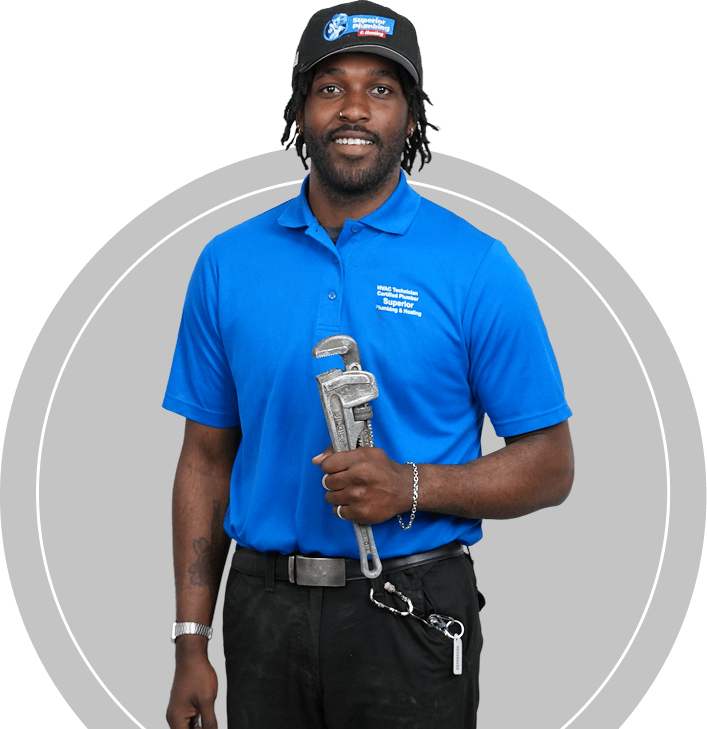There are many reasons for low water pressure in the water heater or throughout your home. If the problem is due to the city’s water supply, like a broken water main, you’ll need to wait for the water company to fix it. However, if the issue is specific to your home, such as a leaking water pipe or a faulty pressure regulator, plumbing repairs can help fix the problem.
The first step to addressing issues such as the water softener causing low water pressure and many others is to identify potential causes. Several factors could play a role in this:
- Clogged Pipes. Mineral deposits, rust and debris can build up in the water system over time, reducing the pressure and decreasing the quality of drinking water.
- Water Supply Issues. Sometimes, water pressure problems can be caused by changes in the municipal water supply during busy hours or due to maintenance work.
- Leaky Pipes. Leaks can also be the reason, allowing water to escape so your Pfister waterfall faucet has low water pressure. One of the most common reasons is hard water.
- Faulty Pressure Regulator. If the pressure regulator in your home is not functioning properly, it can result in low water pressure. To address this issue, seek assistance from a certified plumber.
How to recognise the signs of low water pressure?
Detecting low water pressure early can help you avoid problems like weak water flow in the shower and “my well pump has no pressure”. Recognizing the signs promptly can also prevent potential plumbing problems in the future. To fix low water pressure, first pay attention to its signs:
Dripping or Leaking Faucets
If you notice water unexpectedly dripping from your taps, it could be an indication of low water pressure. Low water pressure can lead to leaks by compromising the effectiveness of seals and washers. To address this issue, you should check the pressure switch to ensure that water flow is at the appropriate level.
Slow Filling Appliances
Have a water pump and want to increase water pressure at home? Low water pressure can significantly impact the performance of your washing machine, dishwasher, and other appliances that rely on water. It can also affect how well your equipment works and cause problems with cleaning and other tasks in your home.
Inconsistent Water Temperature
Low water pressure can cause an imbalance in the flow of hot and cold water in your plumbing system, leading to sudden fluctuations in water temperature when you’re taking a shower or using water. If you notice these sudden changes in temperature, it’s important to get in touch with a qualified plumber to assess and address the issue promptly.
Low Pressure at Your Faucets
When you open a waterfall faucet and notice low water pressure, it’s a clear indicator that action needs to be taken. If you notice a decrease in water flow or intermittent pauses, it could indicate suboptimal water pressure, possibly stemming from the main water supply. Contact a plumbing company to have your system checked.
Reduced Pressure with Multiple Fixtures
If you switch on several appliances at once and experience a sudden drop in water pressure, your system may struggle to provide enough flow. This can lead to inconsistent water temperature and reduced appliance performance, potentially damaging your plumbing. consult a plumber to discuss potential solutions such as a pressure regulator or booster.
Low Water Pressure In Shower
Notice fluctuating water pressure in the shower? If your shower’s water flow seems weaker than usual, it’s important to address and fix this issue early on. Weak water pressure can be caused by mineral buildup in the shower head, clogs in the plumbing, or even issues with your home’s water supply. Ignoring it can lead to more significant plumbing problems over time.

How to diagnose low water pressure?
No pressure at the well pump or plumbing fixtures? Understanding the causes of low water pressure will help you repair your plumbing system effectively. Here is a simple guide to help you identify low water pressure:
- Examine Multiple Fixtures. To troubleshoot low water pressure, begin by examining the water pressure at each tap in your home. If you find that the issue is isolated to a single tap or shower head, it may be due to a localized problem such as a clogged aerator or shower head.
- Gauge Your Water Pressure. Use a water pressure gauge attached to an outdoor spigot or tap. This handy device provides an accurate reading to help you determine if your water pressure is falling below the recommended range of 40-60 psi. The right settings will allow you to increase water pressure in the well pump and other fixtures.
- Check the Main Shut-Off Valve. To prevent low water pressure issues, it’s crucial to ensure that the main shut-off valve is fully open. If the valve is only partially closed, it can greatly reduce the water flow throughout your system.
- Inspect Pipes for Potential Leaks. If you’re experiencing issues with water flow, check the visible pipes for any signs of leaks or damage. Even small leaks can result in considerable water loss, ultimately affecting your system’s pressure.
- Check for Sediment Accumulation. The well pump runs but no water pressure? Make sure to inspect the water line entering your home for sediment build-up, especially if you have an older home. Accumulated deposits can block the flow of water and result in low pressure. It’s a good idea to flush the system periodically to clear any potential blockages.
- Assess Pressure Regulating Valves. Ensure your pressure regulating valve works properly if your home has one. A faulty valve can reduce the volume of water, decreasing pressure throughout the house.
- Monitor Municipal Supply Fluctuations. No pressure on the well pump? Some common causes are external factors related to the municipal water supply or high water demand in the area. Contact your local water utility to inquire about ongoing maintenance or issues that may be affecting pressure in your area.
- Consult with a Plumbing Expert. If you can’t identify the reason for the low water pressure, contact a local water supplier or a professional plumber for assistance. They have the necessary expertise to diagnose complex issues, including significant pressure drops, and can work with you to find an effective solution.

How to improve water pressure?
As low water pressure can be caused by so many different factors, it is important to apply the following solutions:
- Clear Clogged Pipes. Use chemical cleaners or hire professionals to flush out buildup in your plumbing systems to reduce water pressure drops.
- Fix Leaks Promptly. Does your new well pump have low water pressure? Repair any leaks in pipes or fittings with plumbing tape or a plumbing repair kit.
- Adjust or Replace Pressure Regulators. Check if the water pressure regulator is faulty; consider adjusting or replacing it to achieve the desired water supply pressure.
- Install Water Pressure Booster. Is the water pressure low at your well pump? In severe cases, install a pressure boosting pump.

Common homeowner problems with low water pressure and their solutions
Dealing with low water pressure can be more than just a small problem, it can disrupt daily routines and cause stress for homeowners. Whether it’s a weak shower or a slow kitchen faucet, low water pressure can happen for many reasons. From clogged pipes to faulty pressure regulators, each issue needs a specific solution. Let’s look at some of the main reasons for low water pressure and how to fix them:
Water Valves
The Problem: Have low water pressure in the house? If you’ve recently completed a home renovation, upgraded your plumbing, or dealt with a burst pipe, there’s a chance that you had to shut off your home’s main water valve. Alternatively, the city might have turned off the valve that connects your home to the city water line. After the problem is fixed, the valves may not be fully turned back on. This could result in water pressure dropping in the house or even a lack of water pressure in the house, affecting your entire plumbing system.
The Solution: If you’ve noticed reduced water pressure in the house, check your water valves and ensure they are fully opened. Twist them all the way open, then close them slightly (1/8 to ¼ of a turn) to avoid the valves sticking. If the valve isn’t fully open, it can cause low water pressure in your home.
Pressure Regulator
The Problem: While having strong water pressure may sound great, too much pressure can damage your plumbing and lead to water waste. If your home’s water pressure is suddenly low or if you’re noticing a sudden decrease in water pressure, it could be due to a malfunctioning pressure regulator. This device helps control water pressure, but if it’s faulty, it can lead to either an unexpected surge or a drop in pressure, which may cause low household water pressure.
The Solution: Replacing or repairing a pressure regulator can be tricky. Given how essential it is to maintain a balanced water flow, hiring a professional is best to ensure it’s done properly. A plumber can assist with boosting water pressure in your house or adjusting it if needed.
Pipe Problems
The Problem: Old pipes can become leaky, corroded, cracked, or clogged over time. Materials like galvanized steel, often used in older homes, can accumulate mineral deposits, which causes cold and hot water low pressure. Additionally, if your property shares a water line with neighbouring homes, your low water pressure in the apartment or low water pressure in the condo could be caused by increased usage by neighbouring buildings.
The Solution: It’s better to call a plumber rather than attempt a DIY solution that could involve pouring chemicals down your pipes. A professional can identify the root cause of decreased water pressure in the house or weak hot water pressure and recommend the best course of action. This may involve cleaning or replacing sections of the plumbing to increase home water pressure.
Faulty Fixtures
The Problem: Water pressure is low in the house suddenly? It could be due to a clogged aerator in a faucet or showerhead. Over time, debris and mineral deposits can accumulate, causing no water pressure in certain fixtures. For example, low water pressure when you use hot water can often occur in showerheads due to buildup.
The Solution: If an aerator is the issue, remove it, clean it thoroughly, and reattach it. This should help resolve bad water pressure in the affected fixture. If the problem persists, the entire fixture may need replacing. To avoid no hot water pressure in the house or no water pressure when using hot water, ask a plumber to assess the situation and determine whether your plumbing system needs to be replaced or upgraded.
When to call a professional?
If you can’t fix low water pressure on your own, call a licensed plumber. They can handle complex issues like extensive pipework problems, significant leaks, or well pump low pressure issues.



